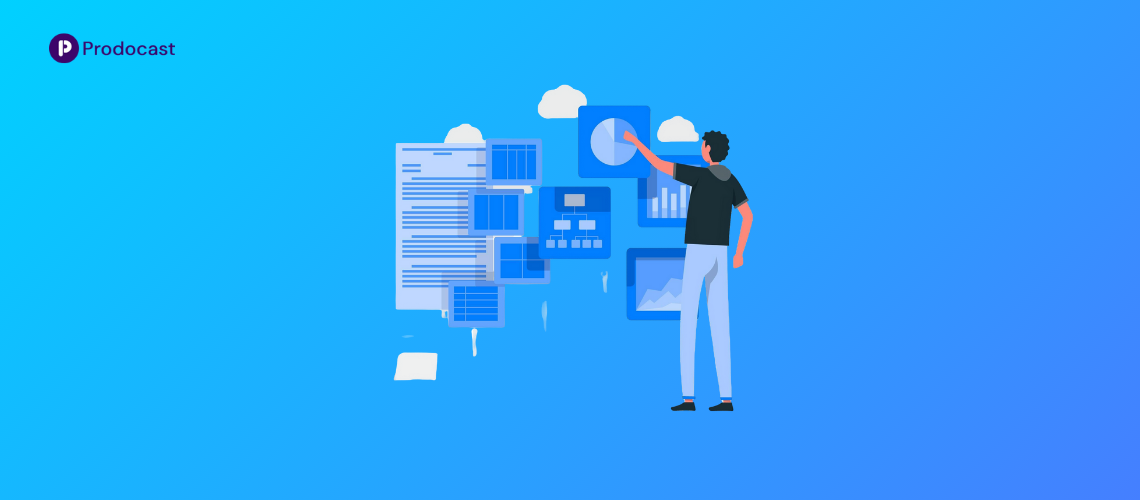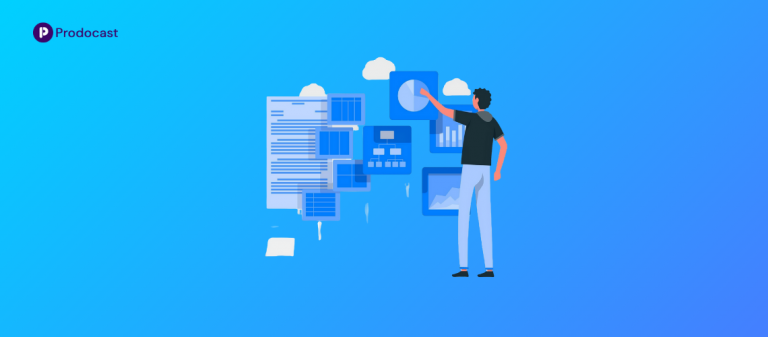Software Buying Guide of 2024: Future-Proof Your Business with the Right Tools
In today’s fast-evolving digital landscape, staying competitive means having the right software solutions at your disposal. However, the process of choosing the perfect software for your business has become increasingly complex. With new technologies emerging and shifting business needs, the traditional approaches to software buying might no longer be sufficient.
In this guide, we’ll help you navigate the software buying landscape for 2024, highlighting the latest trends, must-have features, and key considerations that will ensure your business stays ahead of the curve. By the end, you’ll be equipped with the knowledge to make informed decisions and invest in software that not only meets today’s needs but also scales with your future goals.
1. Introduction: Why 2024 is a Pivotal Year for Software Buyers
The software market is undergoing rapid transformation, driven by advancements in artificial intelligence (AI), automation, remote work, and increased data security regulations. The global shift towards digital-first operations, fueled by the pandemic, has also led to a surge in cloud-based solutions, collaborative platforms, and mobile-first software tools.
2024 brings a new era of business software, where the focus has shifted from merely solving immediate problems to future-proofing your business operations. As businesses increasingly adopt hybrid and remote work models, and as technologies like AI and automation become critical components of operations, the criteria for selecting software have changed significantly.
But how do you navigate this evolving landscape? Let’s dive into the key factors that every business should consider when buying software in 2024.
2. Evolving Trends in Business Software for 2024
Artificial Intelligence (AI) and Automation Take Center Stage
AI and automation have been around for some time, but in 2024, they are no longer a “nice-to-have.” Businesses of all sizes are now relying on AI-powered tools to streamline processes, enhance customer experiences, and improve decision-making. Automation is becoming a critical part of software for everything from marketing and sales to customer service and data management.
Key examples include:
- AI-driven analytics tools that provide predictive insights to help businesses anticipate trends and make smarter decisions.
- Automation in customer support through AI chatbots and virtual assistants, reducing the need for human intervention and improving response times.
What to Look For in 2024: Choose software with integrated AI features such as machine learning algorithms, predictive analytics, and automation capabilities to help reduce manual tasks and increase efficiency.
Hybrid and Remote Work Tools Dominate the Market
With the rise of hybrid work environments, businesses are placing increased importance on collaborative tools that facilitate seamless communication and project management, no matter where employees are located.
In 2024, software platforms that support video conferencing, real-time collaboration, and secure file sharing are in high demand. Tools like Slack, Microsoft Teams, and Zoom have expanded their feature sets to become more than just communication platforms—they now integrate with numerous business applications to provide a holistic work environment.
What to Look For in 2024: Ensure the software you choose has strong integration with remote work tools, supports real-time collaboration, and provides mobile accessibility for on-the-go workers.
Data Privacy and Security: A Growing Concern
As businesses collect more data, compliance with privacy laws and data protection standards has become a top priority. In 2024, GDPR, CCPA, and other privacy regulations are more stringent than ever, and businesses must ensure that any software they purchase complies with these standards.
Moreover, with the rise of cyber threats, robust security features are no longer optional—they are a necessity. Many businesses are now prioritizing software with built-in encryption, multi-factor authentication, and security auditing features.
What to Look For in 2024: Choose software that offers robust security protocols, complies with global privacy regulations, and provides audit trails for data access and management.
Sustainability and Eco-Friendly Software
An emerging trend for 2024 is the shift toward sustainability in the software industry. More companies are recognizing the importance of environmental responsibility and are seeking solutions that minimize their carbon footprint. This could mean choosing software hosted on energy-efficient cloud servers or tools that promote paperless workflows.
What to Look For in 2024: Look for software vendors committed to sustainable practices, offering green certifications or operating on eco-friendly infrastructure.
3. Key Considerations When Buying Software in 2024
Future-Proofing Your Investment
One of the biggest challenges businesses face when purchasing software is ensuring that their investment will remain relevant and functional as their business grows and changes. With technological advancements happening so quickly, it’s crucial to select software that can evolve with your company’s needs.
What to Consider:
- Scalability: Can the software accommodate more users, handle larger volumes of data, or support more advanced features as your business grows?
- AI-Readiness: Is the software designed to integrate with AI and automation technologies that will likely dominate the market in the coming years?
Integration and Flexibility
The software you choose needs to work well with the tools you’re already using. Integration capability is key for seamless workflows. Whether it’s a CRM, ERP, or accounting software, your new software must integrate with your existing systems to avoid data silos and improve efficiency.
What to Consider:
- APIs and Third-Party Integrations: Does the software offer robust APIs or integrations with popular platforms like Salesforce, QuickBooks, or Shopify?
- Customizability: Can the software be easily tailored to suit your specific workflows and business processes?
Vendor Innovation and Long-Term Support
Another factor to consider is the software vendor’s reputation for innovation and customer support. Choosing a vendor that consistently innovates ensures your business can take advantage of new features and technologies without having to switch platforms.
What to Consider:
- Vendor Roadmap: Does the vendor have a history of introducing new features and updating their software regularly?
- Support and Resources: Are there ample resources, such as training materials and customer support, to help your team implement and use the software effectively?
4. 2024-Specific Buying Criteria
User Experience (UX) as a Priority
In 2024, user experience is a key differentiator. With so many software options available, businesses are gravitating towards solutions that prioritize intuitive design and ease of use. A clean and organized interface can save countless hours of training and help employees be more productive from day one.
What to Look For:
- Intuitive Navigation: Software with a simple, logical layout that minimizes the learning curve.
- Personalization: Tools that allow users to customize their dashboard or workflows based on their roles or preferences.
Mobile-First Approach
More employees are accessing business tools from mobile devices than ever before, especially with the continued rise of remote work. In 2024, having software that is fully functional on mobile devices is not just a perk—it’s essential.
What to Look For:
- Mobile-Friendly Interfaces: Software should provide the same core functionality on mobile as on desktop.
- Offline Access: Ensure the software allows for offline work when a reliable internet connection isn’t available.
Low-Code/No-Code Platforms
2024 is seeing a surge in low-code and no-code platforms that empower non-technical users to build their own applications or automate workflows without needing IT intervention. These platforms are revolutionizing the way businesses approach process management and software development.
What to Look For:
- Drag-and-Drop Features: Tools that let users create workflows, forms, or apps with simple drag-and-drop functionality.
- Automation Capabilities: Platforms that offer automated triggers and workflows to streamline business processes.
5. Key Sectors and Recommended Software (Sector-Specific Breakdown)
While there are countless software options available, not all are suitable for every industry. Here’s a breakdown of top software choices for various industries in 2024:
Retail and E-Commerce
- Top Software: Shopify, BigCommerce, WooCommerce
- Key Features: Integrated payment processing, inventory management, mobile-responsive storefronts, marketing automation.
Healthcare
- Top Software: Epic, Cerner, Athenahealth
- Key Features: HIPAA compliance, electronic medical records (EMR), telehealth capabilities, patient management systems.
Finance
- Top Software: QuickBooks, Xero, FreshBooks
- Key Features: Automated invoicing, real-time expense tracking, multi-currency support, financial reporting.
Manufacturing
- Top Software: NetSuite, Fishbowl, SAP ERP
- Key Features: Inventory management, production planning, supply chain management, quality control.
6. Pricing Models and How They’re Changing in 2024
Subscription-Based Models
Subscription models are still the dominant pricing structure in 2024. However, there’s a shift towards more flexible, usage-based pricing, where companies only pay for what they use. This allows for more cost-effective scalability.
Open-Source Software
Open-source software remains a viable option for businesses that require customization and control. While these tools may require more technical expertise, they offer businesses full control over the software’s development and usage.
Examples: Open-source CRM (Odoo), Open-source project management (Trello with plugins).
7. Vendor Partnerships: Future-Proofing Through Collaboration
Why Vendor Support Matters More Than Ever
When purchasing software in 2024, it’s crucial to select a vendor that offers more than just a product. The best vendors act as partners, providing long-term support, regular software updates, and insights into how the software can be used to its full potential.
What to Look For:
- Strong Customer Support: Look for vendors that offer 24/7 support, live chat, and comprehensive help centers.
- Long-Term Partnership: Choose vendors who view your business as a long-term partner and who provide regular updates and improvements.
8. Common Mistakes to Avoid When Buying Software in 2024
1. Ignoring Data Portability
Ensure the software allows for seamless data migration if you need to switch vendors or scale your business in the future.
2. Overlooking Long-Term Costs
Don’t focus solely on upfront costs. Consider the total cost of ownership, including implementation, training, and ongoing maintenance.
3. Neglecting Vendor Research
Choosing software from a vendor with poor support or a limited feature roadmap can lead to issues down the line. Always vet vendors thoroughly before committing.
9. Final Checklist for Software Buyers in 2024
Before making your final decision, use this checklist to ensure you’re on the right track:
- Is the software scalable and future-proof?
- Does it integrate seamlessly with your current systems?
- Does it prioritize security and comply with data protection regulations?
- Does the vendor offer strong customer support and long-term collaboration opportunities?
- Have you factored in both immediate and long-term costs?
10. Leveraging Expert Consultation: Getting it Right the First Time
Even with extensive research, making the final decision can be challenging. This is where expert advice can make a big difference.
At Prodocast, our team offers free consultations to help businesses navigate the complexities of software selection. With in-depth industry knowledge, we assist you in refining your software requirements, comparing options, and making informed decisions that align with your long-term business goals. Our experts help you save time and effort, providing tailored recommendations based on your unique needs.
Additionally, Prodocast allows you to search for software by category, apply filters to match your specific requirements, compare features, and save your shortlisted options. This comprehensive approach makes it easy for businesses to make data-driven decisions without getting overwhelmed by choices.
Conclusion: Navigating the Software Landscape in 2024
The software buying process in 2024 is more complex than ever, but by staying informed about the latest trends, prioritizing key features like scalability and AI-readiness, and leveraging expert consultation, you can make decisions that will serve your business well into the future.
Remember, choosing the right software is not just about solving today’s challenges—it’s about positioning your business for future success.
Bonus Tip: Promote Your Software on Prodocast
If you’re a software developer or vendor looking to expand your product’s reach, listing it on Prodocast is an excellent way to gain visibility. Prodocast allows you to list your software products for free, providing a platform to connect with potential customers and showcase your offerings to a wider audience. By leveraging digital channels and utilizing platforms like Prodocast, you can maximize your product marketing efforts and drive more traffic to your software.
Follow us on Linkedin for more product marketing insights




[…] Related Read: Software Buying Guide of 2024 […]
[…] Related Read: Software Buying Guide of 2022 […]